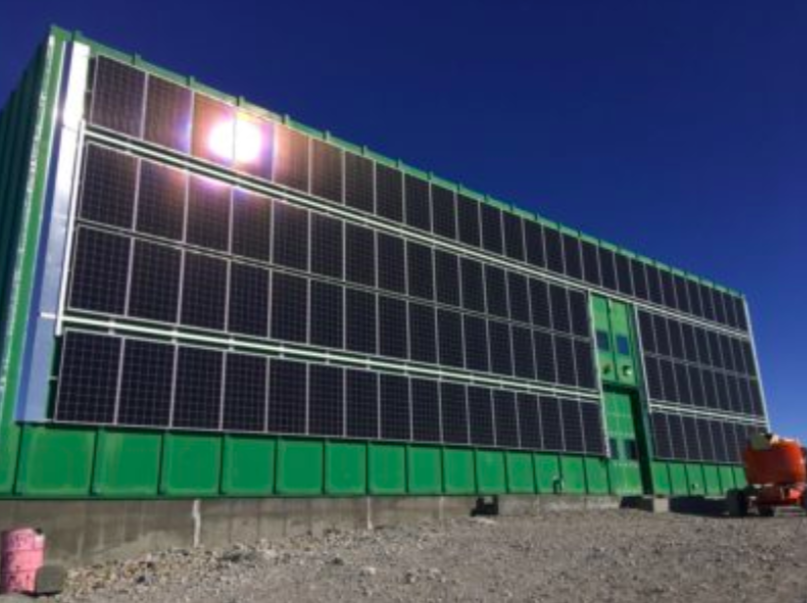The 105-panel array, mounted on the northern wall of Australia’s Casey Station, will provide about 10% of the facility’s total electricity demand per year and reduce its reliance on diesel generators.
“It will cut fuel costs and emissions, as well as boost the station’s capacity in peak periods,” said Australian Antarctic Division Director, Kim Ellis.
The project is a collaboration between the Australian Antarctic Division and Abu Dhabi-based Masdar. The two sides will investigate a range of efficiency and energy-management options at Australia’s Antarctic stations.
“This project will help to build expertise in, and the performance of, solar systems in cold and remote environments,” said Mohamed Jameel Al Ramahi, chief executive officer of Masdar. “It will test the durability and suitability of the solar panels to the strong wind and snow load in Antarctica and help us to determine if it is an efficient way of powering a station.”
The solar panels were sourced from Germany’s Aleo Solar, while the inverters came from Austria’s Fronius. Australian Antarctic Division engineers undertook wind modelling, produced technical drawings and devised a special mounting system of brackets and rails to fit the corrugated shape of the green store cladding.
The installation process saw the brackets and rails installed first to hold the panels flush against the wall. The next step was to install external cable ducting, internal cable trays, a switchboard and three inverters to convert the variable direct current into 240-volt alternating current.
During the installation process, the team worked in temperatures as low as -7°C, as well as a number of blizzards. “The cold was a challenge, as the brackets and bolts are small and fiddly and can’t be installed while wearing gloves, so we had to use hand warmers to keep our fingers nimble,” said Doreen McCurdy, engineering services supervisor at Casey Station.
“On windy days we had to focus on the internal installation, as the elevated work platform we use outside can’t operate in winds above 15 knots. Once all the rails and brackets were in place, though, we were able to install about 15 panels a day.”
While the panel installation is unusual in its flush mounting against the wall, it has been designed to strike a balance between maximum solar gain and stability in the wind, while ensuring that the panels are easy to install, access and maintain.
“Back in the real world, the sun typically goes overhead. Down here at the very low latitudes in the southern hemisphere, the sun typically doesn’t get much above the horizon, so the wall of the building gets more sunshine than the roof of the building,” explains Mark Pekin, an infrastructure engineer.
For the next steps, the team plans to look at connecting the panels up to a battery storage system and assessing whether solar farms might be suitable for use at Australia’s other research stations.
“Once the solar system is running we’ll see an immediate energy contribution and we’ll be able to see how it performs as part of the station’s power grid,” Ellis said. “From there we can then look at how to get more out of the technology in the future.”
This content is protected by copyright and may not be reused. If you want to cooperate with us and would like to reuse some of our content, please contact: editors@pv-magazine.com.




1 comment
By submitting this form you agree to pv magazine using your data for the purposes of publishing your comment.
Your personal data will only be disclosed or otherwise transmitted to third parties for the purposes of spam filtering or if this is necessary for technical maintenance of the website. Any other transfer to third parties will not take place unless this is justified on the basis of applicable data protection regulations or if pv magazine is legally obliged to do so.
You may revoke this consent at any time with effect for the future, in which case your personal data will be deleted immediately. Otherwise, your data will be deleted if pv magazine has processed your request or the purpose of data storage is fulfilled.
Further information on data privacy can be found in our Data Protection Policy.